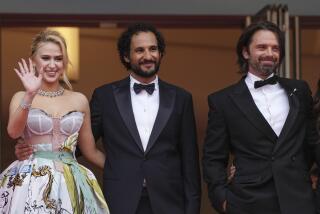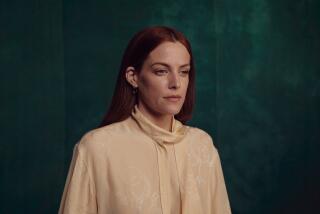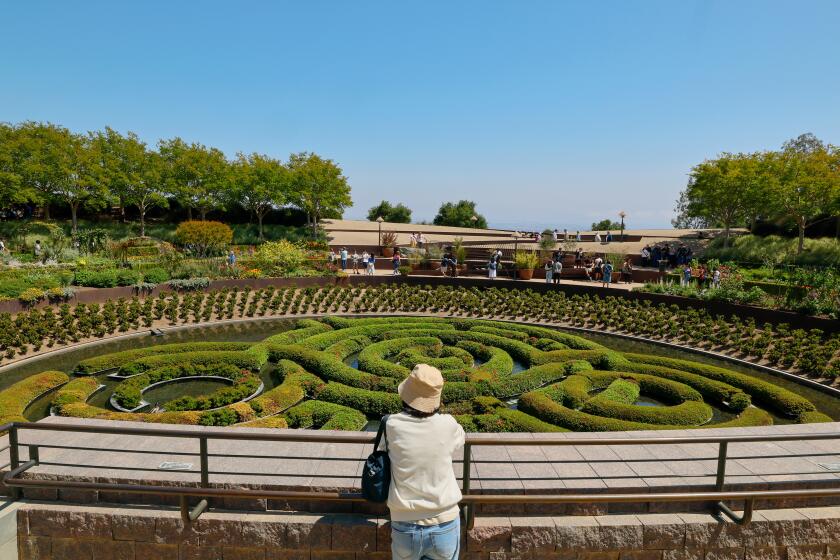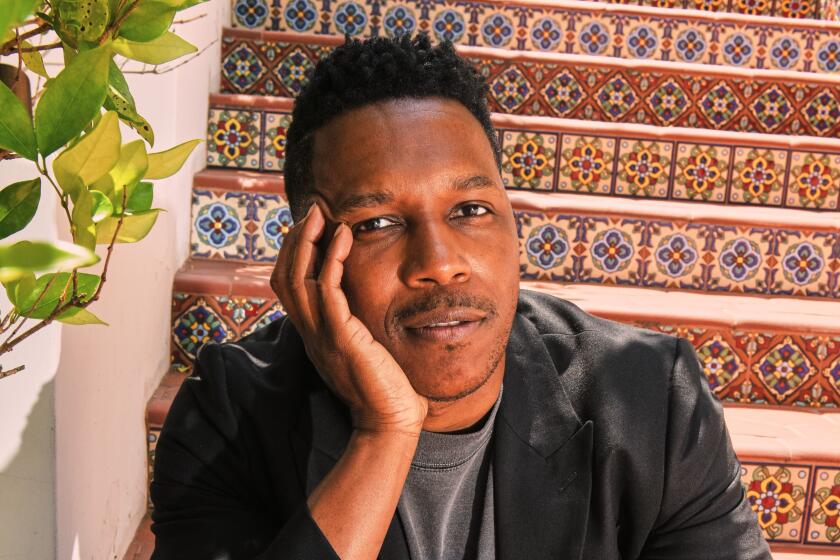Intimate Multiples in ‘Silent & Violent’
There’s now a fairly widespread perception that the multifaceted movement known as Contemporary art reached its historical end with the close of the Cold War. The declaration of a Postmodern period has been fruitful for architecture and design but nothing has successfully supplanted gallery art. It continues to manifest in various ways proving that an art--like a love affair--is not necessarily over when it’s ended.
In art, as in life, that’s a slightly uncomfortable situation. The question arises of the most constructive thing to do in the circumstance. A nice answer is suggested by an exhibition currently on view in one of L.A.’s most cherished--albeit sometimes neglected--architectural masterpieces, the Schindler House in West Hollywood.
Completed in 1921, the dwelling was an idealistic experiment in communal living and architectural innovation. Setting the prototype for residences where indoors and outdoors interpenetrated, it evolved into California’s most distinctive contribution to modern architecture. Rudolf M. Schindler was, of course, Viennese by origin so the house is not just important here. It’s also an extension of seminal 20th century ideas embodied in the Vienna Secession and the work of such towering figures as Freud, Wittgenstein and Schoenberg. In short, the place fairly resonates with the larger spirit of Modernism.
Because of all that, Austria’s MAK (Museum of Applied Arts) gradually formed a partnership with the Friends of the Schindler House, resulting last year in the MAK Center for Arts and Architecture L.A. It sponsors events, fellowships and exhibitions that have revitalized the house.
Bringing us finally to “Silent & Violent,” the current show of some 65 small multiple-edition works by prominent contemporary artists. The only thing wrong with it is the title. That is to be forgiven because it bears on the reason why this collection in this place at this time is so apt and so telling.
“Silent & Violent” suggests bygone days when the idea of radical art as a kind of stiletto slid between the ribs of convention might have been daring. Today it resonates with nostalgia. So do posted claims that the reason for making art multiples is to undermine the primacy of the singular object. Similarly it’s said that a multiple like Meret Oppenheim’s gloves subverts the distinction between art and ordinary things. Such ideas have long since been absorbed by the culture. Today they read like confessions of harmlessness. They inspire affection.
The artists, as usual, seem to be ahead of the game. Mike Kelly’s “Goethe Quote” finds the great German intoning, “Imagination lies in wait as the most powerful enemy . . . breaks out against all restraints like a savage who takes delight in grimacing idols.” To show how he feels about such volcanic rhetoric Kelly appends an “idol” that looks a lot like Big Bird on “Sesame Street.”
An untitled video loop by Bruce Nauman begins with a young gentleman seating a young lady at dinner. He jerks the chair too far. She takes a pratfall. They brawl boisterously with many an unprintable word and a below-the-belt kick. Then they start all over. Anybody who takes this as a serious protest against domestic violence is looking at the world through politically correct colored glasses. It’s a Punch and Judy show where both participants have a hugely good time giggling between blows.
Richard Artschwager’s “Hair Box” reminds us that one of Modern art’s main functions is to simply provide an enigmatic vacuum into which the viewer pours all his own meanings. Charles Ray back-dates this idea even further in “The Most Beautiful Woman in the World.” His color snapshots of one Tatjana Patitz prove her a knockout but it’s impossible to look at the piece without thinking, “I must have seen a more beautiful woman.” We’re tricked into admitting we want beauty to be in the eye of the beholder.
It’s hard to make oneself believe that Cindy Sherman’s special-effects monster head or Alighiero E Boetti’s Newsweek variation are not artists’ winsome confessions of helplessness vis-a-vis the big media. But the work also broadcasts an appeal to the viewer to admit that somehow we are co-conspirators in assigning meanings.
That’s an invitation to aesthetic intimacy. That fact reveals the character of the whole. This is Contemporary art retiring into its Rococo phase after the triumph of the grand Baroque. This is 20th century art playfully and gracefully preparing itself to shortly become a period style--honored, and respected as it becomes a senior citizen.
* MAK Center, Schindler House, 835 N. Kings Road, West Hollywood, through Aug. 31, closed Monday and Tuesday. (213) 651-1510.
More to Read
The biggest entertainment stories
Get our big stories about Hollywood, film, television, music, arts, culture and more right in your inbox as soon as they publish.
You may occasionally receive promotional content from the Los Angeles Times.






